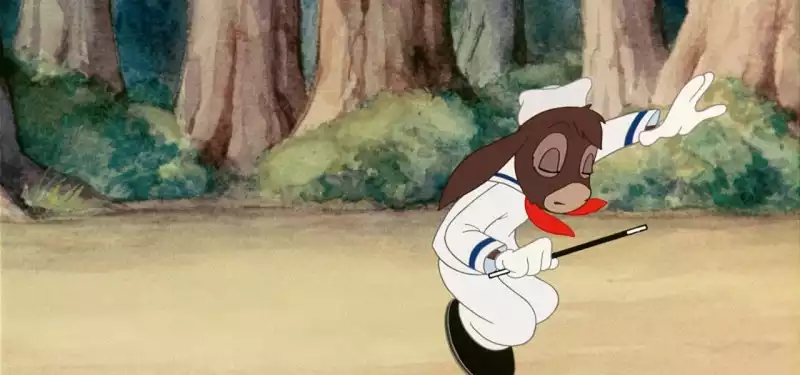Sep 5, 2013
The Imitation of Life," Sneaking Animation into the Venice Biennale.
The Venice Biennale, a major biannual art festival currently underway in Venice, Italy, featured an animation installation this year. Matthias Poredna's "Imitation of Life" is installed in the festival's Austrian Pavilion. This three-minute 1930s-style short, produced by DUCK Studios in Los Angeles, appears to be a fairly faithful throwback to the classic era.
Of course, simply making an animated film is not enough to be recognized as art with a capital "A" or to be entered in a biennale. Animation must be recontextualized into a more "meaningful" endeavor. Hence the work's strikingly decadent official description:
Imitation of Life, a 35mm color film approximately 3 minutes in length, was created using a historic and laborious handmade animation technique, and is built around cartoon characters performing musical numbers The Imitation of Life is made using a historic and laborious handmade animation technique and is built around cartoon characters performing musical numbers. Its upbeat spirit and visual textures recall the golden age of the American animation industry in the late 1930s and early 1940s. In the preceding years, during the Great Depression, the medium had evolved from a crude form of mass spectacle to an extraordinarily rich and complex visual language that continues to shape and resonate with our collective imagination.
The Imitation of Life appropriates and reconstructs this language, revisiting the contradictions and ambiguities that accompanied this media development. The advanced production techniques and visual devices owed much to the syntax of European modernism in their treatment of surface, depth, and color, praised by the avant-garde and critical intelligence of the time, but coexisting with sentimental characterizations and storytelling based on time-honored fables and fairy tales .
One of the most striking features of the film is the extreme contrast between the brevity of its scenes and the tremendous effort that went into their production: over 5,000 handmade sketches, layouts, animated drawings, watercolor backgrounds, ink-rendered animation and The cels were produced in close collaboration with renowned artists from the Los Angeles film studios, particularly Disney's animation department. Several small groups of these drawings are on display in the Austrian Pavilion.
The soundtrack, another important element of the film, was recorded with a full orchestra in the style of the period at the Warner Brothers Scoring Stage in Los Angeles. It combines re-arrangements of popular songs from the 1930s written by Arthur Freed and Nacio Herb Brown with new original music created for the project. [The relationship between European art and American popular culture, immigration from Europe to the United States and exports from the United States to Europe, the screening of animated films produced by Disney Studios at the first Venice film festival, late modernism in the Austrian Pavilion, and the period from 1938 to 1942. The Austrian Pavilion was also the site of several other major exhibitions, including the period during which the building was vacant while Austrian artists exhibited in the German Pavilion.
The Imitation of Life incorporates into its fleeting narrative numerous elements from early entertainment history, including vaudeville, silent comedies, and film musicals, as well as its engagement with animation, and the diverse art forms of film, music, painting, and literature form a variety of art forms, including film, music, painting, and literature. Yet, while subscribing to the synergistic logic of its medium, the film deliberately eschews a seamless whole, remaining at once alien and utterly recognizable.
(Thanks, @StephenPersing)
.



Post your comment